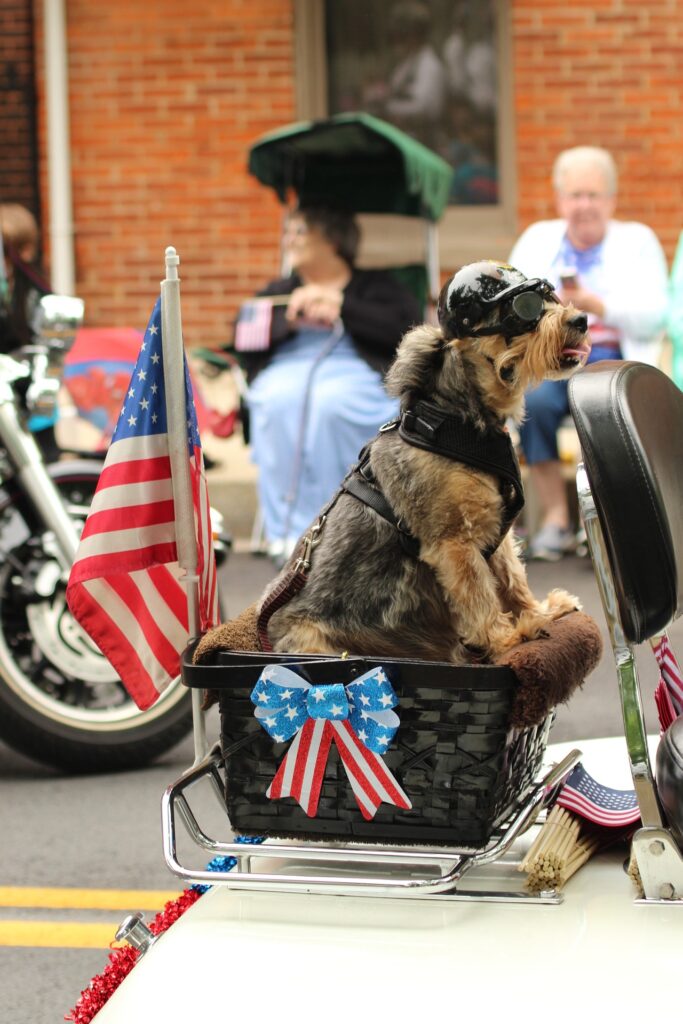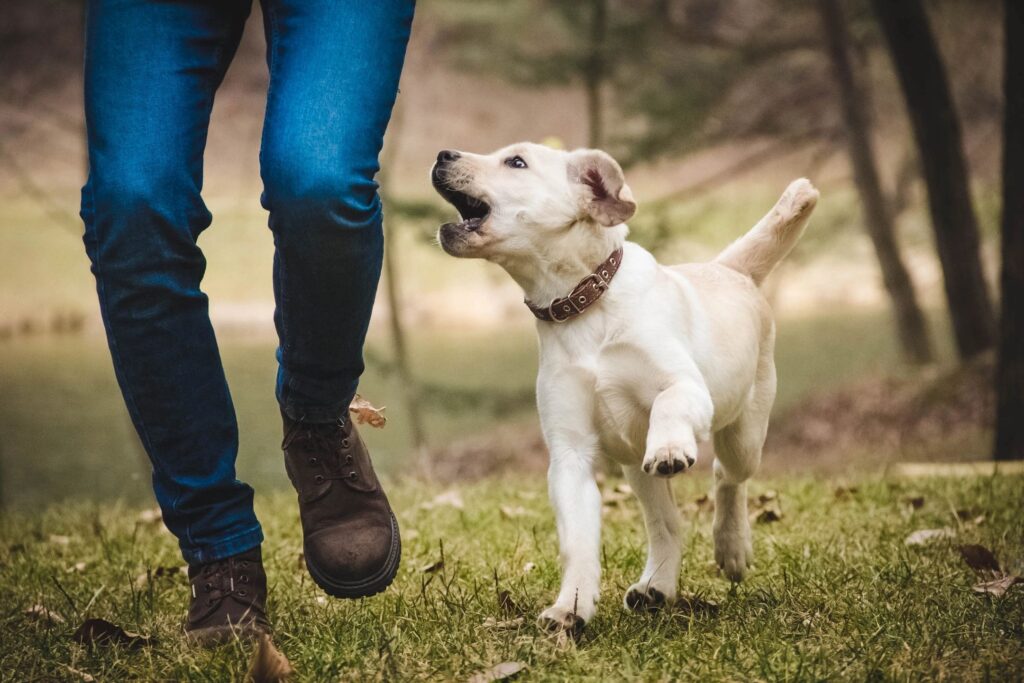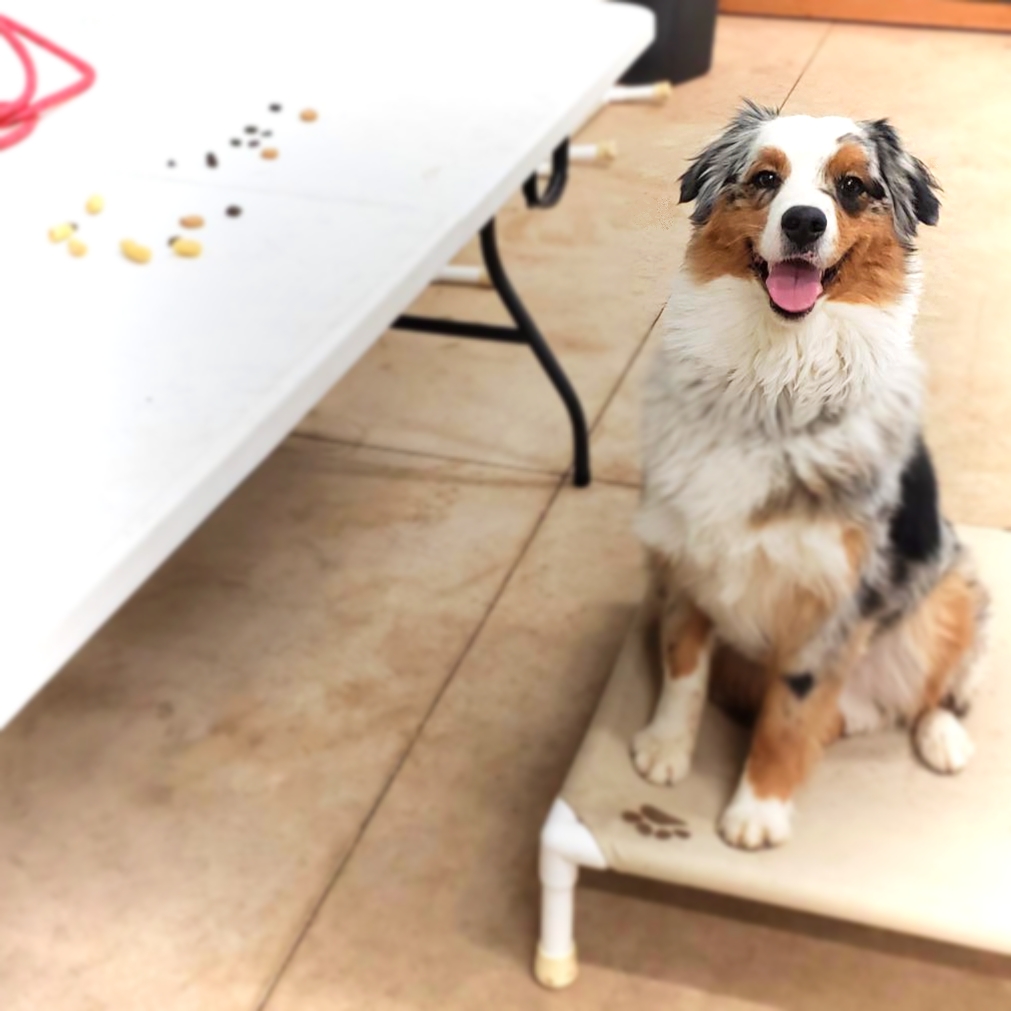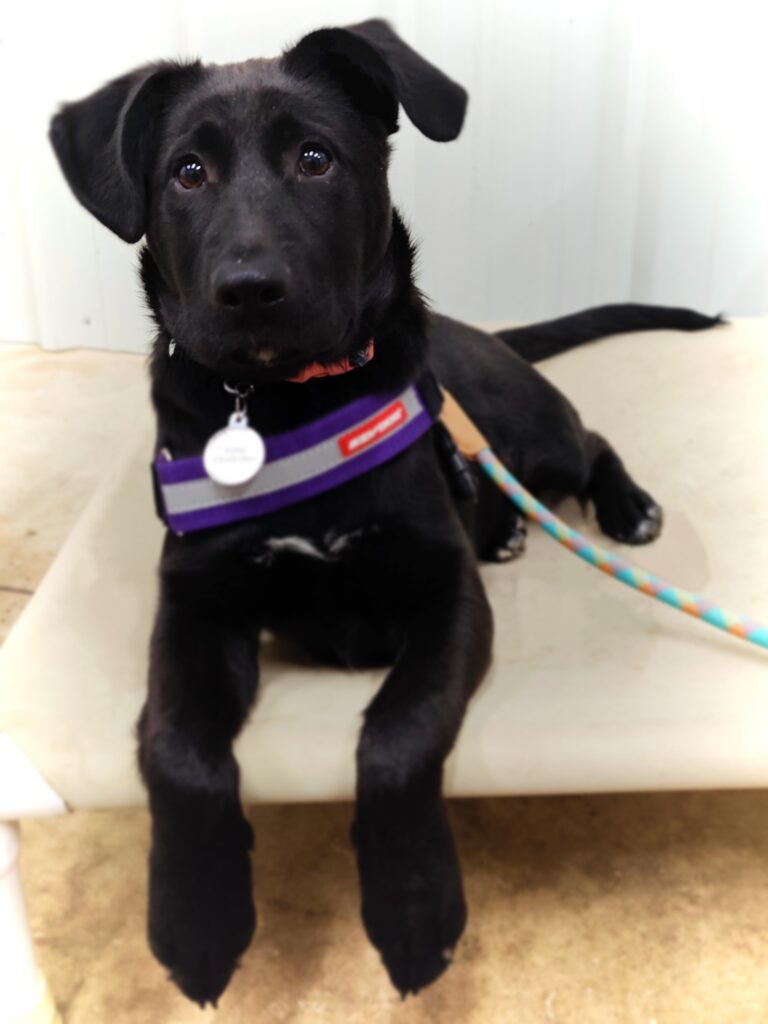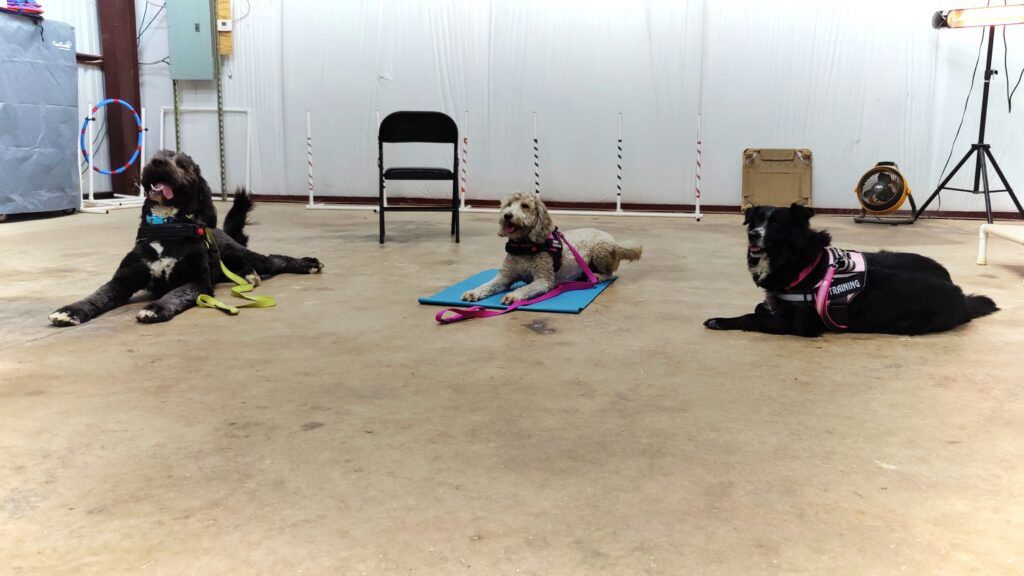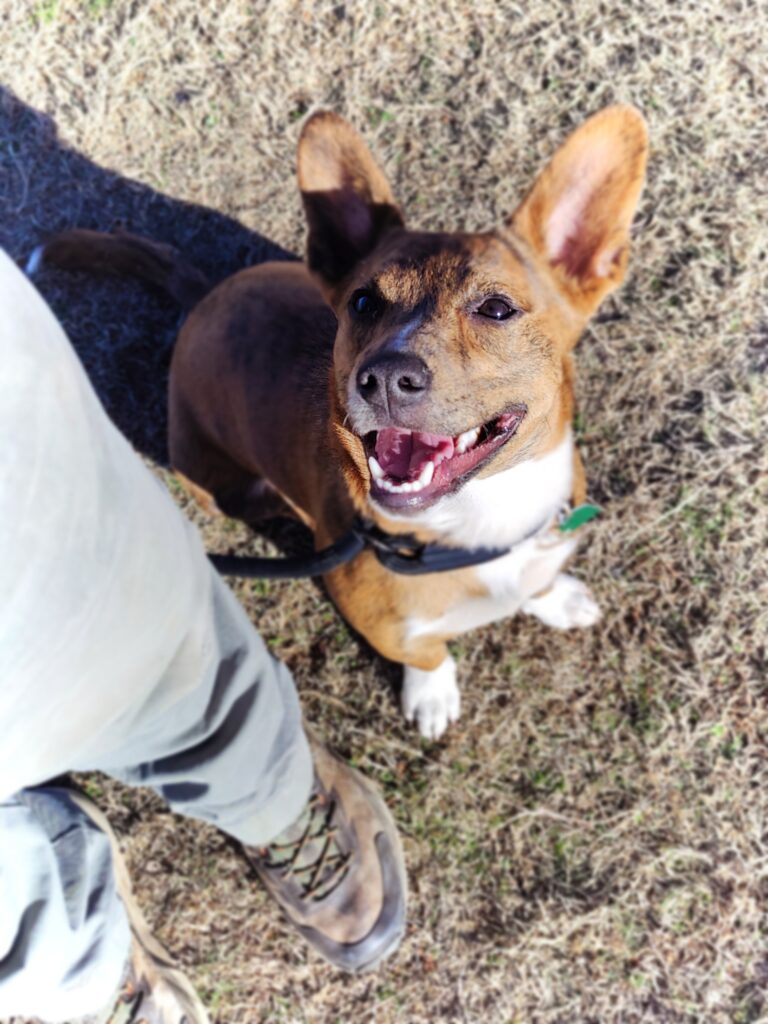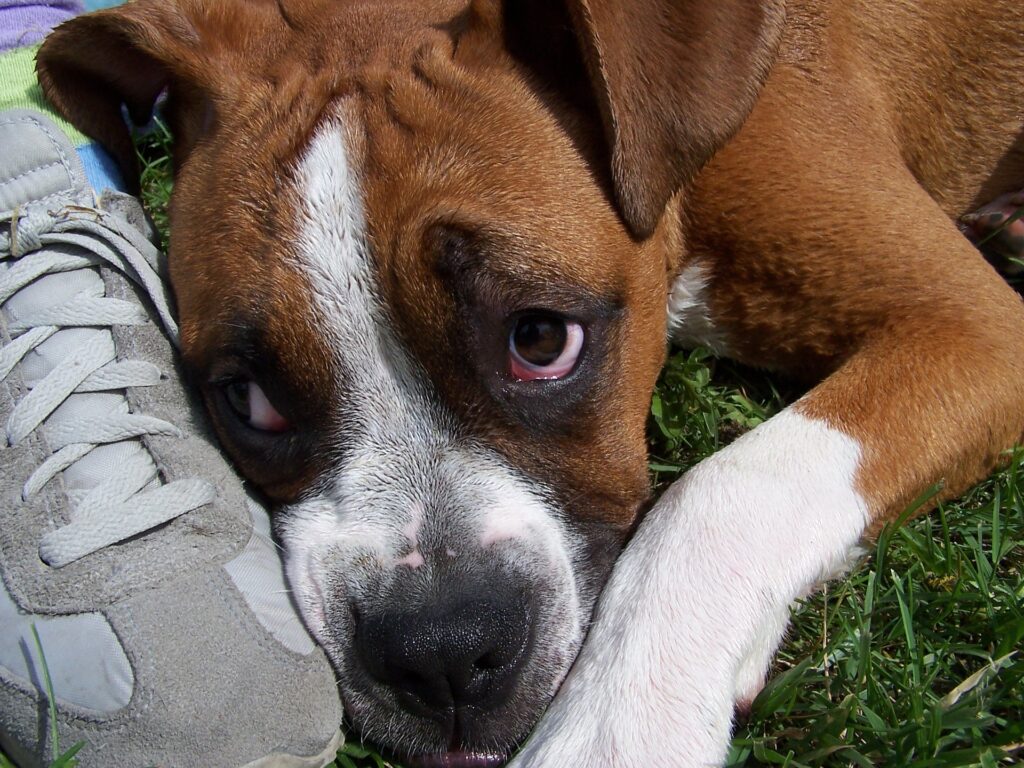Want to take your dog to a parade this spring or summer? It can be so much fun to bring Fido along on these outings since most of them are held outdoors in dog friendly spaces.
But do you know the best skills your dog should have so you can enjoy the parade together?
Here are our top three skills to have down before going on your parade adventure with your pooch.
Heel:
Yes, it is nice if your dog doesn’t pull on leash and can do loose leash walking, but in tight spaces, you want to teach your dog how to move right next to you so you don’t end up clotheslining anyone.
Heel is when your dog stays right at your side whether you are in motion or standing still. If your dog knows how to move in tandem with you, it can make it a lot easier to navigate the crowds you’ll encounter when going from point A to point B.
Heel takes practice and we love to teach it to our dogs in our training programs. It is a fun skill to master and feels a lot like dancing with your dog as you move together.
Leave it:
Parades mean lots of people and people mean lots of items, tossed, abandoned, or otherwise. There can be a lot of temptation at parades, like dropped food, candy, and even trash taken away by the wind. There are usually picnics and food trucks as well, which means the smells are abundant and strong. Plus, to your dog, that upside down funnel cake on the sidewalk doesn’t look like it belongs to anyone, and why not just grab a nibble? No one’s eating it anyway.
If you have a dog with anything less than an iron stomach, this can mean no sleep and lots of emergency potty breaks in the middle of the night, or a horrible car ride on the way home. Even if your dog has said iron stomach, certain items consumed in high quantities can be toxic. Candy that gets passed out at parades sometimes contains the sweetener xylitol, which is extremely toxic to our furry companions.
Leave it not only saves your dog’s life, but will allow you to enjoy your time together for longer when out and about, and not have a dog who regrets partying too hard later. We love teaching dogs leave it in our training programs. It helps with impulse control and is all about teaching coping skills when you can’t have what you want.
Settle:
Let’s face it, holding still is hard for a lot of dogs, especially if they like action and movement. But while you’re settling in to watch all the floats and banners go by, you want to make sure your dog knows when to chill out.
Teaching your dog a good down stay, settle, or place on a blanket or mat where you’re hanging out is a wonderful skill for when you’d like to enjoy the show. If your dog knows when it’s time to relax and take in the views, this can help them know what to expect.
This is also a wonderful skill while waiting in line. If your dog knows how to lay at your feet calmly, this can help while you are waiting for food to be available, or while you are waiting to get into an area with your dog. It’s also good to have when you need to focus on what you are doing, like looking for something in your purse or wallet.
If you know your dog is in a down stay while you are busy, it can help relieve the stress of wondering what they are doing when you aren’t looking. Teaching dogs to settle down and relax is a skill we teach in our programs. Its uses go well beyond spectating at parades and can be helpful when hanging out on a patio or trying to enjoy a sit down meal at home without your dog begging.
All these skills and more can be learned in our training programs.
Whether you’d like to start with drop off training, private lessons, or group classes, we love to teach dogs life skills for the real world.
Most of these skills can be taught under low distractions, but they are definitely put to the test when you go out in the world.
Make sure to work your dog through distractions slowly. Just like with human children, we don’t just teach them manners at home and then take them to Disney World and expect excellence. We start much smaller than that. We teach children, start taking them on smaller outings, and only give them more access to more exciting situations when they are ready–or at least we try! Your dog will likely need the same courtesy with all the skills they learn.
A last note before closing:
Not all dogs enjoy being in a parade environment and that’s okay. Parades can be a lot of excitement and some dogs do not thrive in those spaces. It is important to know your dog well before embarking on your journey. Does your dog tolerate strangers well? What about small children, loud noises, and big moving objects? Even dogs who may tolerate these things may not enjoy being out around them for longer periods of time.
If you do decide that your dog would thrive in all the excitement, make sure to bring the necessities along with you: water, poop bags, high value training snacks, and lots of patience.
If it turns out your dog needs a break or isn’t enjoying themselves, have a plan in place for getting out of the parade scene. It’s always important to recognize your dog’s needs, and it’s okay if these needs change over time or from day to day.
If your dog would much rather stay home and take a nap while you go party, they’ll thank you for giving them the quiet time they need. If you’re worried about leaving your dog alone all day while you are out and about, consider having a dog walker do a drop-in to give your dog some attention or go on a nice stroll in the neighborhood.
Just because your dog isn’t an extrovert like you doesn’t mean you can’t go enjoy yourself every once in a while. Trust us, you aren’t being a terrible person by letting your dog stay home if that’s what they want to do. You’re doing them a favor and respecting their needs. You can always make plans for a lower-key outing later.
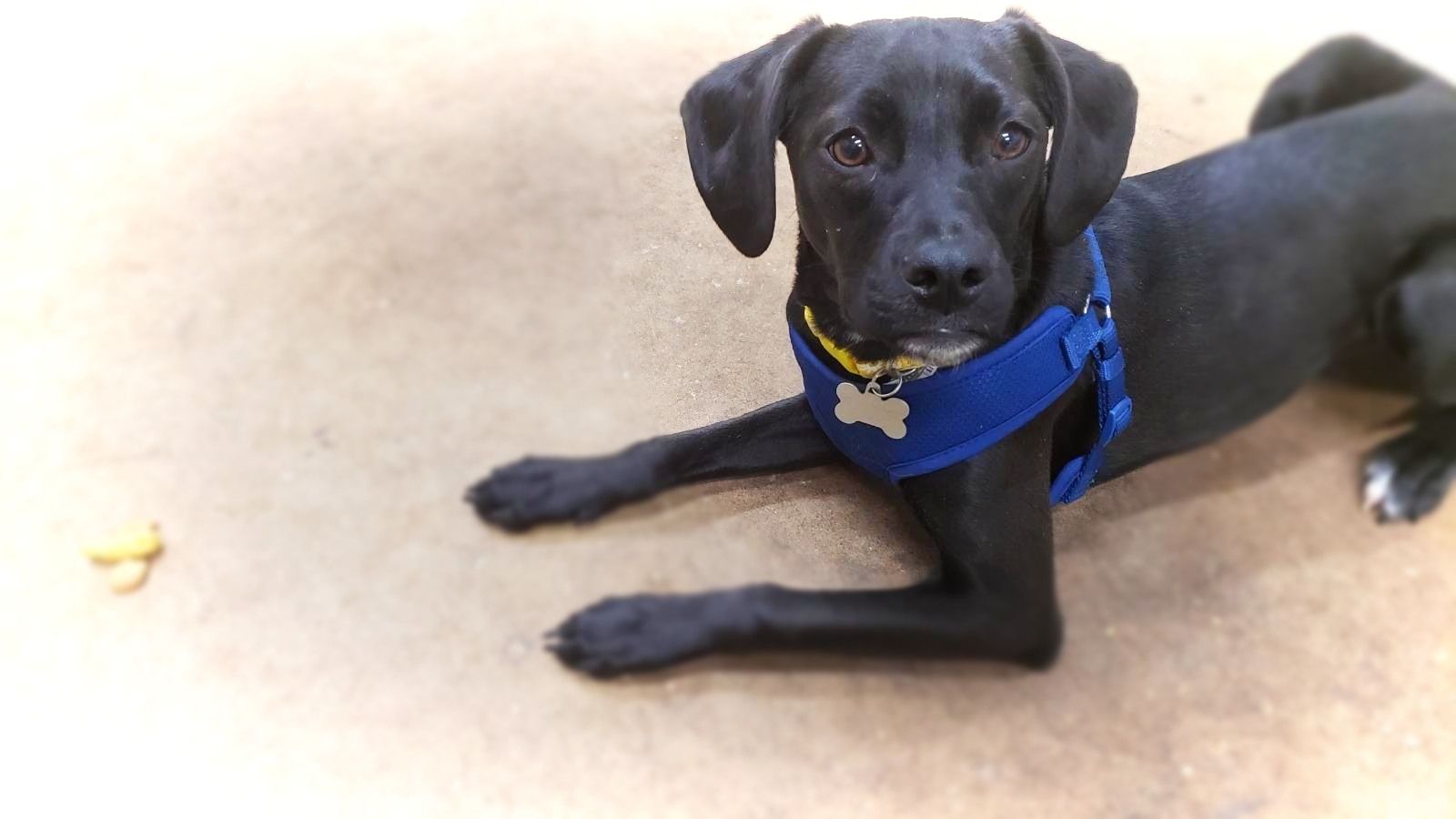
Does your dog need manners to go more places with you?
Click below to chat with us about what program is right for your dog.
We offer free consultations that can get you off on the right paw.

